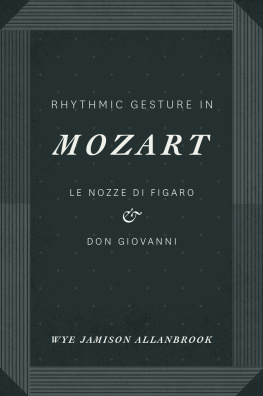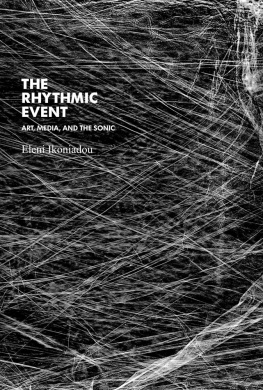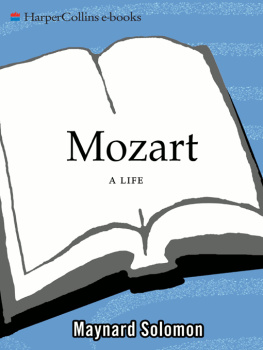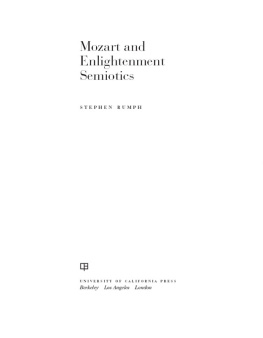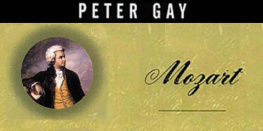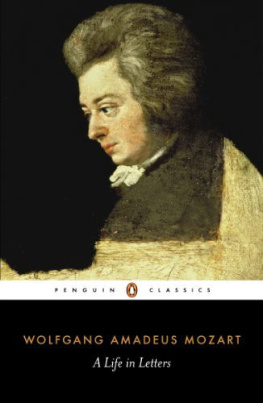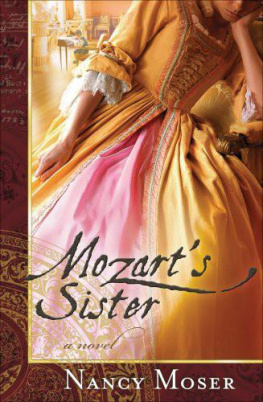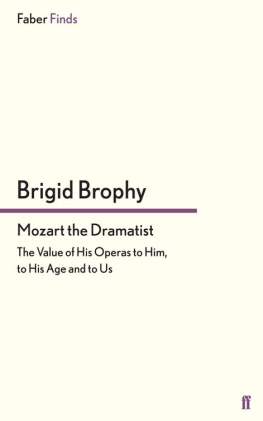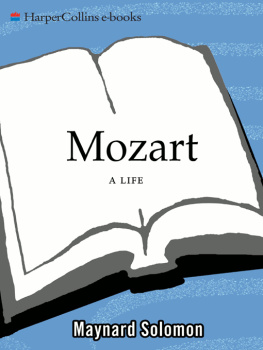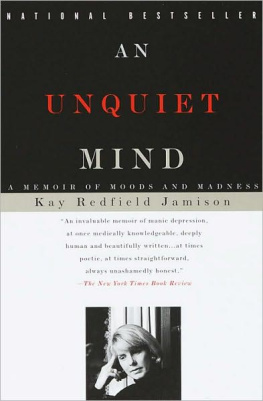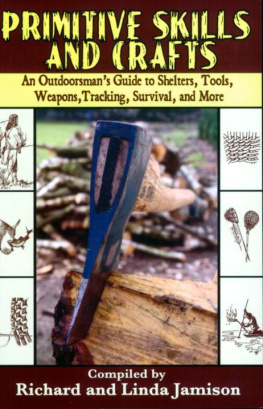Wye Jamison Allanbrook (editor) - Rhythmic Gesture in Mozart
Here you can read online Wye Jamison Allanbrook (editor) - Rhythmic Gesture in Mozart full text of the book (entire story) in english for free. Download pdf and epub, get meaning, cover and reviews about this ebook. year: 1983, publisher: University of Chicago Press, genre: Detective and thriller. Description of the work, (preface) as well as reviews are available. Best literature library LitArk.com created for fans of good reading and offers a wide selection of genres:
Romance novel
Science fiction
Adventure
Detective
Science
History
Home and family
Prose
Art
Politics
Computer
Non-fiction
Religion
Business
Children
Humor
Choose a favorite category and find really read worthwhile books. Enjoy immersion in the world of imagination, feel the emotions of the characters or learn something new for yourself, make an fascinating discovery.
- Book:Rhythmic Gesture in Mozart
- Author:
- Publisher:University of Chicago Press
- Genre:
- Year:1983
- Rating:5 / 5
- Favourites:Add to favourites
- Your mark:
- 100
- 1
- 2
- 3
- 4
- 5
Rhythmic Gesture in Mozart: summary, description and annotation
We offer to read an annotation, description, summary or preface (depends on what the author of the book "Rhythmic Gesture in Mozart" wrote himself). If you haven't found the necessary information about the book — write in the comments, we will try to find it.
Rhythmic Gesture in Mozart — read online for free the complete book (whole text) full work
Below is the text of the book, divided by pages. System saving the place of the last page read, allows you to conveniently read the book "Rhythmic Gesture in Mozart" online for free, without having to search again every time where you left off. Put a bookmark, and you can go to the page where you finished reading at any time.
Font size:
Interval:
Bookmark:
Rhythmic Gesture in
MOZART
LE NOZZE DI FIGARO & DON GIOVANNI
Wye Jamison Allanbrook
University of Chicago Press
CHICAGO AND LONDON
The University of Chicago Press, Chicago 60637
The University of Chicago Press, Ltd., London
1983 by The University of Chicago
All rights reserved. Published 1983
Paperback edition 1986
Printed in the United States of America
22 21 20 19 18 17 16 3 4 5 6 7
Parts of this book first appeared in the following publications and are reprinted here with permission: Musical Quarterly 47 (January 1981); Music and Letters 63 (1982); Studies in the History of Music, vol. 2, Ronald Broude, editor ( 1983 by Broude Brothers, Ltd.); and St. Johns Review 26 (April 1974), 31 (July 1979), and 33 (Winter 1982).
LIBRARY OF CONGRESS CATALOGING IN PUBLICATION DATA
Allanbrook, Wye Jamison.
Rhythmic gesture in Mozart.
Includes index.
1. Mozart, Wolfgang Amadeus, 17561791. Nozze di Figaro. 2. Mozart, Wolfgang Amadeus, 17561791. Don Giovanni. 3. Rhythm. 4. Dance musicHistory and criticism. 5. Ballroom dancingHistory18th century. I. Title.
ML410.M9A73 1983 782.10924 83-9184
ISBN 0-226-01403-7 (cloth)
ISBN 0-226-01404-5 (paper)
ISBN 978-0-226-43771-2 (e-book)
To my mother and father
LIST OF FIGURES
PREFACE
Some notes on the procedures I have used in preparing this book may be helpful to the reader. Translations of texts from Italian, German, French, and Greek are my own unless otherwise specified. Lack of space has prevented me, in quoting from treatises and other secondary sources in foreign languages, from including the original texts. I have, however, given the quotations from da Pontes libretti and from the works of Beaumarchais and Molire in their original language in the text, with my translations in footnotes, because I wanted the reader always to have the lively original before him. I have followed the Ricordi libretto for da Pontes texts rather than the Neue Mozart-Ausgabe because I found the original versification of the texts often to be of significance in my consideration of particular movements.
In studying the operas, and in preparing the musical examples, I have consulted both the Neue Mozart-Ausgabe and the Eulenburg miniature orchestral scores. The Eulenburg system of numbering measurescontinuously from one aria or ensemble to the next, through any intervening recitativesI have found to be the most precise means of locating references in the recitatives, and so I have adopted it rather than that used in the Neue Mozart-Ausgabe. For the form of my references I have used either act, aria or ensemble number, and measure number (I, 2, 11), or act, scene number, and measure number (I, ii, ll), depending on which version more conveniently locates the passage in question.
For describing the quality of various rhythmic gestures I have adopted a system of notation which may at first seem confusing; I have spelled out its eccentricities in note 7 to chapter 2.
Finally, I follow Leonard G. Ratner in viewing Classic form as essentially a compositional procedure, which follows a basic harmonic plan; I have adopted his terminology to describe it. I discuss the matter at greater length in note 5 to chapter 3.
There are two people to whom I owe more than mere thanks, without whom this book would not exist. One is Leonard Ratner, whose brilliant work in the syntax and style of Classic music is the point of departure for any good thoughts I have had about the subject. The other is my husband, Douglas Allanbrook, whose intelligence and impeccable taste have influenced this book at every stage of its preparation, and whose constant and generous support made it possible to do what at times seemed impossible. Further, I would like to thank Virgil Thomson, whose enthusiasm for my work and trenchant comments on it spurred me on at a critical moment, and Janet M. Levy, Beate Ruhm von Oppen, and Elliott Zuckerman, who were unfailingly generous with editorial advice and encouragement. Kathryn Kinzer of the St. Johns College Library was indefatigable in bringing the contents of other libraries to me in Annapolis. In preparing the book for publication I was extremely fortunate to have the services of Christina Davidson, who is responsible for the elegant calligraphy and autography in the book, and Hunter Davidson, who engineered the complex process of entering the manuscript in a word processor. They brought regularity and system to an eccentric manuscript, and were extraordinarily inventive in handling the special problems it presented. Finally, thanks are due to the Corporation of Yaddo, for the chance of two summers tranquil and productive work, and to St. Johns College, where for the past fourteen years I have been, among other things, learning to think more intelligently about the elements of music.
Wye Jamison Allanbrook
INTRODUCTION
Expression, Imitation, and the Musical Topos
One of the most exalted moments of music in Mozarts operas occurs midway through the second-act finale of Le nozze di Figaro. The Countess, Susanna, and Figaro have just managed to outwit the most recent of Count Almavivas strategems and, united in their precarious triumph, are asking the Count to cease his attempts to sabotage Susannas and Figaros coming wedding (while the Count under his breath mutters imprecations on the head of the tardy Marcellina). The music of the ensemble is extraordinarily beautiful, and lifts the brief moment up out of the temporal bustle of the comedy ( Four other pieces in the last two acts of Le nozze di Figaro have as close a connection with the pastoral, and the poetry of da Ponte abounds in pastoral images. The opera in fact turns out to be a special vision of the refuge offered by the pastoral world to true lovers, and has as its business to explicate those adjectives pastoral and true. This musette-gavotte in the second-act finale is doing its work as part of the complex of associations which confirms and defines the role of the pastoral image in the opera.
That the pastoral plays any role at all in Le nozze di Figaro has not previously been much noticed. It has instead become a commonplace to describe the opera as a drawing-room comedy with strong undertones of revolutionary protest. or at the other merely anatomize his private reactions to a work. By recognizing a characteristic style, he can identify a configuration of notes and rhythms as having a particular expressive stance, modified and clarified, of course, by its role in its movement and by the uses made of it earlier in the piece. In short, he can articulate within certain limits the shared response a particular passage will evoke.

Example i-1
Current notions of the term topic or characteristic style seem often to include under that head all which is musically eccentric or exotic, or belonging to that rather questionable bag of tricks, the imitation of natural phenomena. Membership in the class is considered to mark a figure, a rhythm, or a style as necessarily of limited utility to the composer; it will be much in demand on certain special occasions, but only on special occasions. In the meantime the rest of music moves serenely on down purer and more respectable paths. Only one exception is universally grantedin the high Baroque the Affektenlehre, or doctrine of the affections, with its thoroughgoing attempts to codify the connections between figure and affect.
Yet the music of the Classic style is pervasively mimetic, not of Nature itself but of our naturesof the world of men, their habits and actions. The doctrine of art as imitation, as a mirror to the world, is often today regarded as a puzzling or distasteful teaching. Although it was for centuries the center of the canon of aesthetic theory, it suffered a devaluation in the nineteenth century, when poets and composers began to consider the end of artistic endeavor to be instead the transmission into a poem or composition of the artists own interior state of being. Romantic formulations like the following by Franz Liszt, taking for granted the origin of the creative impulse as the impressions of [ones own] soul, crowned music as the highest of the arts because it alone was capable of expressing inner feeling untrammelled:
Next pageFont size:
Interval:
Bookmark:
Similar books «Rhythmic Gesture in Mozart»
Look at similar books to Rhythmic Gesture in Mozart. We have selected literature similar in name and meaning in the hope of providing readers with more options to find new, interesting, not yet read works.
Discussion, reviews of the book Rhythmic Gesture in Mozart and just readers' own opinions. Leave your comments, write what you think about the work, its meaning or the main characters. Specify what exactly you liked and what you didn't like, and why you think so.

